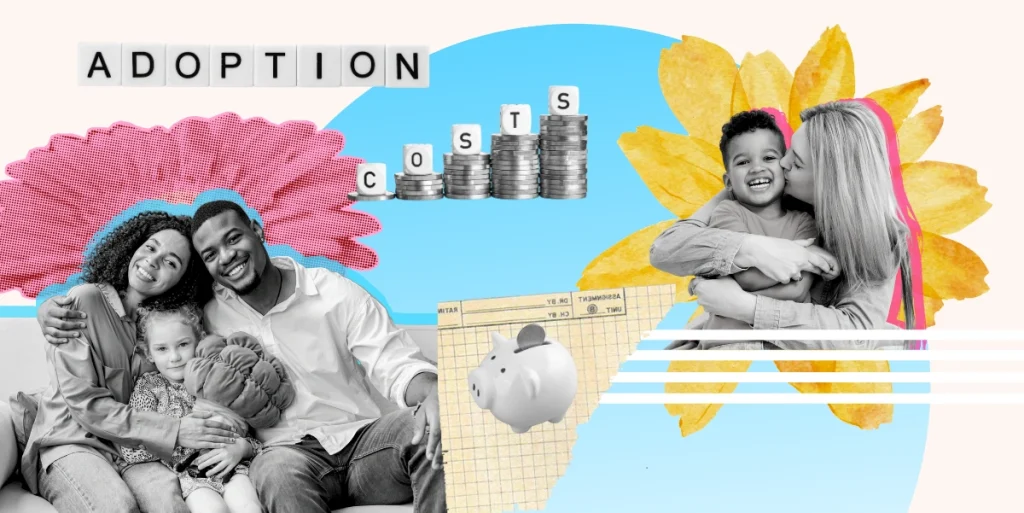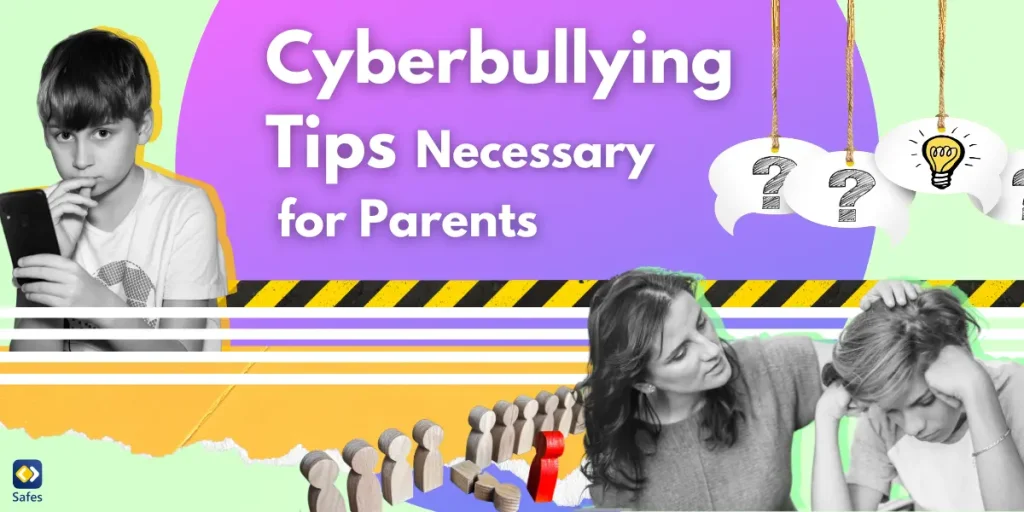According to a 2021 UNICEF report, “the number of children with disabilities globally is estimated to reach almost 240 million”. The report says that millions of children with disabilities are disadvantaged on most measures of child well-being compared to non-disabled children. Parents of children with special needs need to know some essential data to better understand and address their children’s challenges. That’s why in this blog, we’re going to cover the most important statistics about kids with special needs.
Download and Start Your Free Trial of the Safes Parental Control App
Common Types of Disabilities
The Individuals with Disabilities Education Act (IDEA) requires eligible public school students to receive special education services in public schools. However, not every child who struggles in school qualifies. For this to happen, a child’s school performance must be “negatively affected” by the disability. IDEA categorizes disabilities in one of the 13 categories below.
Specific Learning Disability (SLD)
The challenges with this disability affect a child’s ability to read, write, listen, speak, reason, or do math. SLD is the most frequent category under IDEA. Some examples are:
Other Health Impairment
This category covers conditions that limit a child’s strength, energy, or alertness. For example ADHD, that impacts attention and executive function. Executive function is the ability to organize cognitive processes. Examples are planning, prioritizing, stopping and starting activities, shifting from one activity to another, and monitoring one’s behavior.
Autism Spectrum Disorder (ASD)
ASD involves a wide range of symptoms, but it mainly affects a child’s social and communication abilities. ASD can impact behavior since it’s a developmental disability.
Emotional Disturbance
This category can include a lot of mental health issues such as anxiety disorder, schizophrenia, bipolar disorder, and depression.
Speech or Language Impairment
This impairment is about difficulties with speech or language. It covers examples like stuttering, trouble pronouncing words, or making sounds with their voice. Problems that make it hard for kids to understand words or express themselves are included as well.
Visual Impairment
A kid with eyesight problems is categorized in this group, including partial sight and blindness. When eyewear can correct a vision problem it doesn’t qualify.
Deafness
Children who can’t hear most or all sounds, even with a hearing aid, fall under this category.
Hearing Impairment
Hearing impairment refers to hearing loss that is not covered by the definition of deafness. Having trouble with auditory or language processing is not the same thing as being hard of hearing.
Deaf-Blindness
The kids that fall under this category have both severe hearing and vision loss.
Orthopedic Impairment
When kids lack function or ability in their bodies, they have an orthopedic impairment. An example is cerebral palsy.
Intellectual Disability (ID)
Children in this category have below-average intellectual ability. They may have poor communication, self-care, and social skills.
Traumatic Brain Injury
This is a brain injury caused by physical force or an accident.
Multiple Disabilities
A kid with multiple disabilities has more than one of the above-mentioned conditions. When having multiple special needs, a personal program has to be designed for the combination of disabilities.
In the infographic below, the percentage of United States students aged 3-17 years diagnosed with a developmental disability is shown.
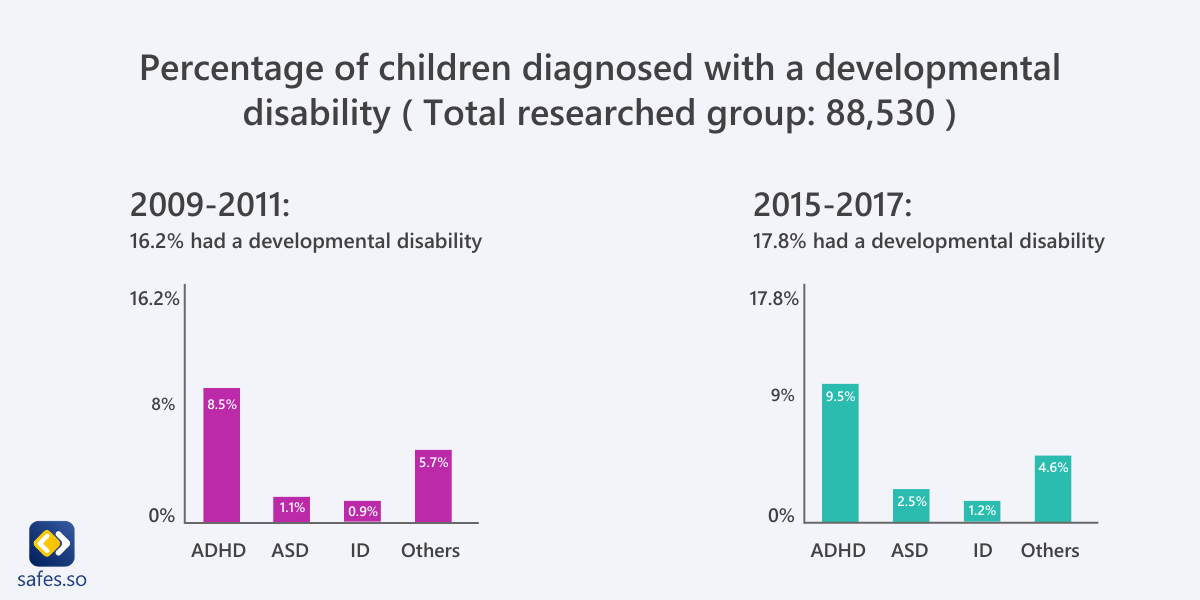
Kids with Special Needs Statistics
UNICEF’s report includes internationally comparable data from 42 countries and more than 60 child well-being indicators. The report shows the obstacles children with special needs face and how these often result in negative health and social outcomes. Statistics resulting from comparing non-disabled kids with disabled kids are:
1. 49 percent of disabled children are more likely to have never attended school
2. 51 percent of disabled children are more likely to feel unhappy
3. 41 percent of disabled children are more likely to feel discriminated against
4. 80 percent of disabled children who do not attend primary school (or higher) cannot concentrate at all
5. 70 percent of disabled children who do not attend primary school (or higher) cannot make friends at all
According to a study done on 88,530 children of 3-17 years by the CDC in the study period (2009-2017):
6. 17 percent of the kids were diagnosed with a developmental disability
7. In the study group, boys were more likely to have been diagnosed compared to girls
8. In 2009-2011, the percentage of diagnosed kids was 16.2 percent, increasing to 17.8 percent in 2015-2017. The reasons for the increases shown in the infographic below were not examined in the mentioned study. Previous research has found awareness, screening, diagnosis, and service accessibility possibly caused this increase.
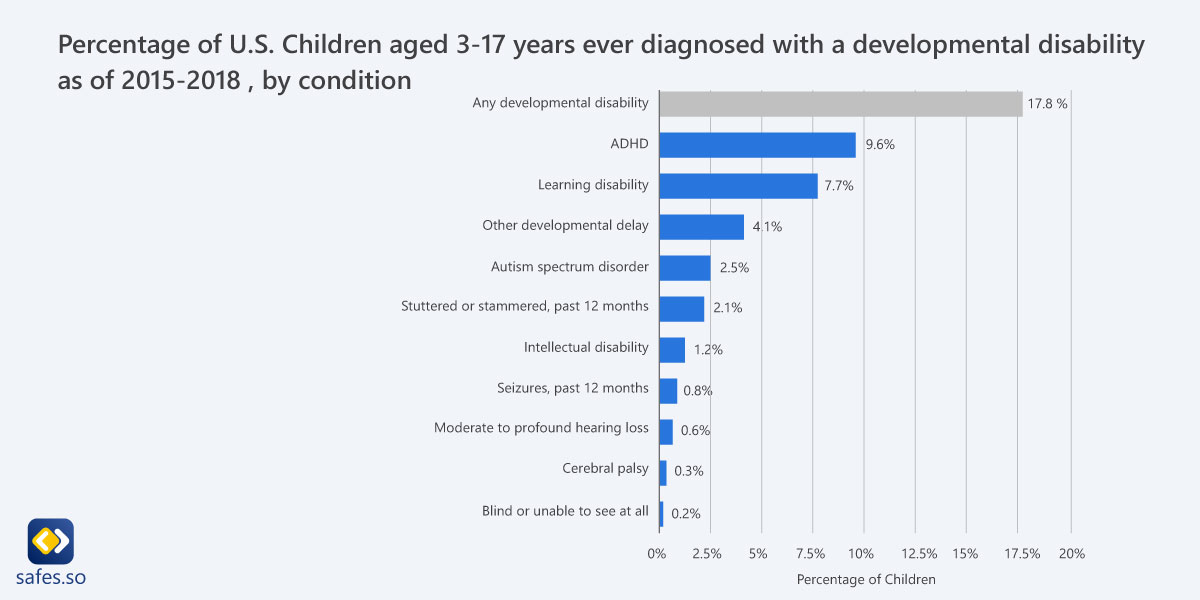
Dangers for Special Needs Kids
According to the same UNICEF report, children aged 24 to 59 months with one or more functional difficulties were taken outside less than other groups. According to the infographic below, other engaging and stimulating activities, such as reading books, telling stories, or singing songs are also done less frequently among kids with disabilities. This is a pitfall because it makes it harder for children to develop their social skills.
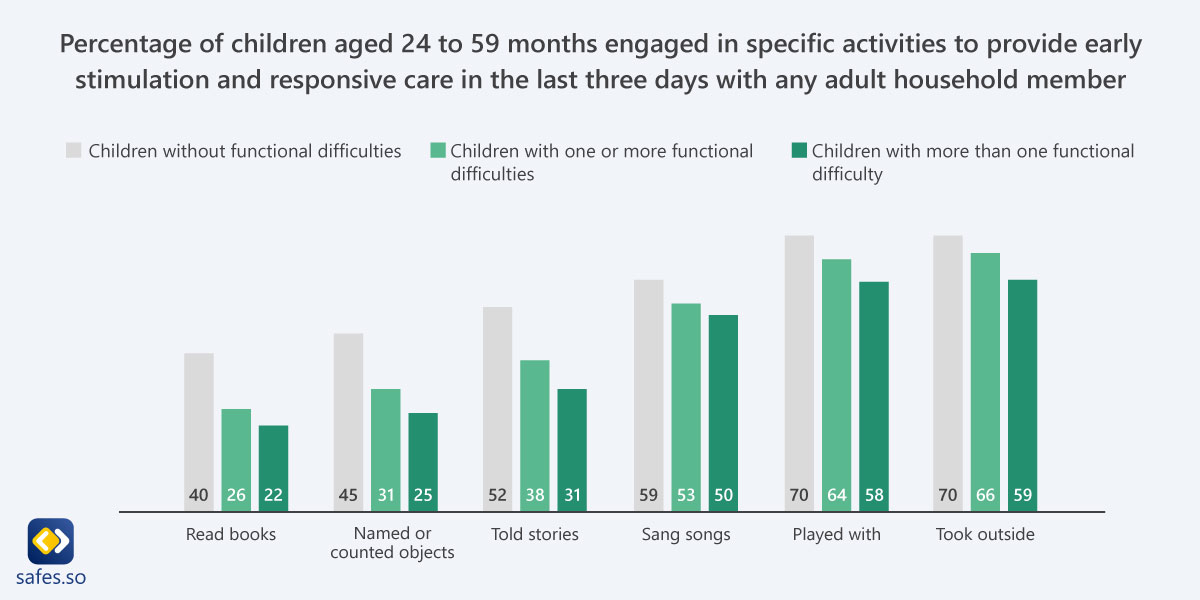
Ultimately, this can lead to more use of social media by special needs kids. According to a study by Ruderman, students with special needs are almost twice as likely to be victims of cyberbullying compared to non-special needs kids. Additionally, almost one in four youth with disabilities felt left out or excluded by using social media. Therefore, social media can be more disadvantageous than advantageous for kids with special needs.

According to the CDC, kids with special needs may have an increased chance of being victims of abuse, neglect, or bullying. Students with disabilities are more prone to trauma, self-injury, and wandering.
Helping Children with Special Needs
There are a lot of resources on the internet that can help you get tips on how to keep your disabled child safe. You can think about reliable sources such as the CDC, WHO, UNICEF, or EDC.
To help protect your child from online dangers, you can download Safes. Safes is a parental control app that has useful features such as:
- Location tracking and geofencing: With this feature, you can see your child’s live location. Parents can block apps in specific areas and also get notified about their kids checking in or out.
- SOS signaling: Allows children to send emergency distress messages to their parents in any kind of alarming situation.
- Website content filtering: Blocks out inappropriate websites. Parents can also select specific content categories.
Experience the full potential of Safes, sign up for Safes’ free trial today!
Your Child’s Online Safety Starts Here
Every parent today needs a solution to manage screen time and keep their child safe online.
Without the right tools, digital risks and excessive screen time can impact children's well-being. Safes helps parents set healthy boundaries, monitor activity, and protect kids from online dangers—all with an easy-to-use app.
Take control of your child’s digital world. Learn more about Safes or download the app to start your free trial today!


